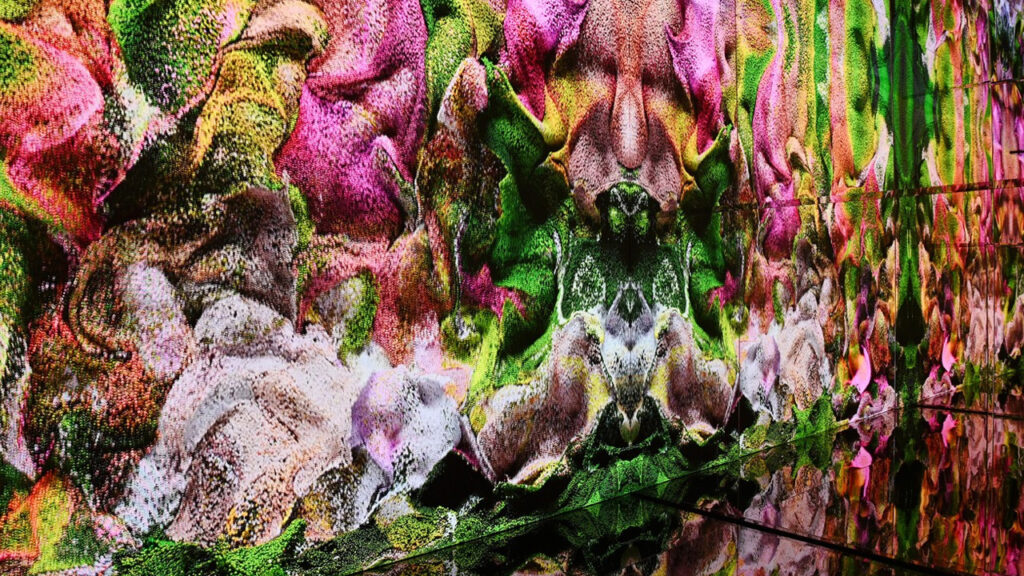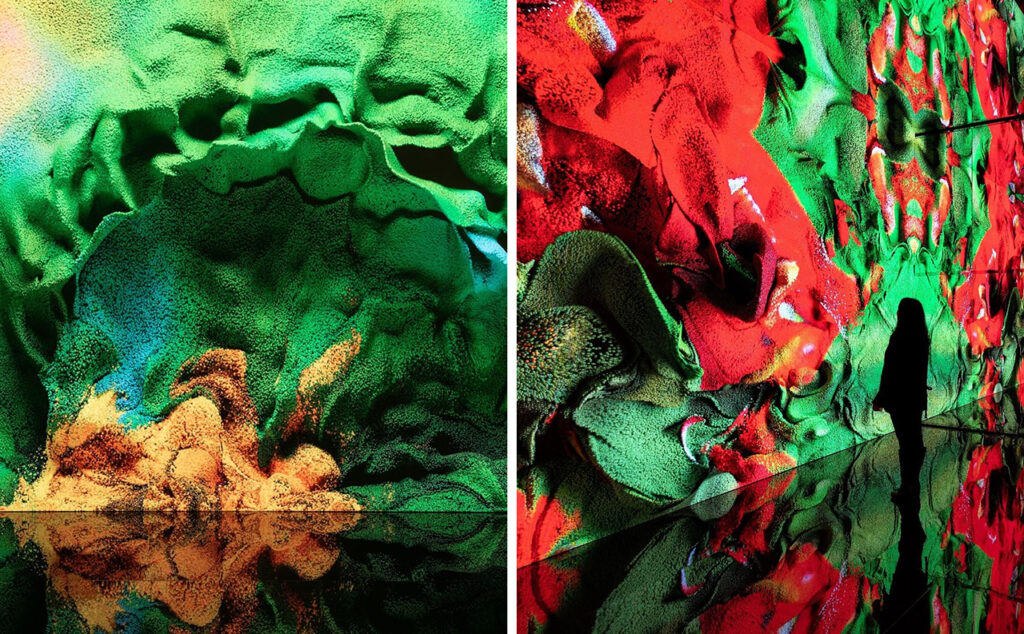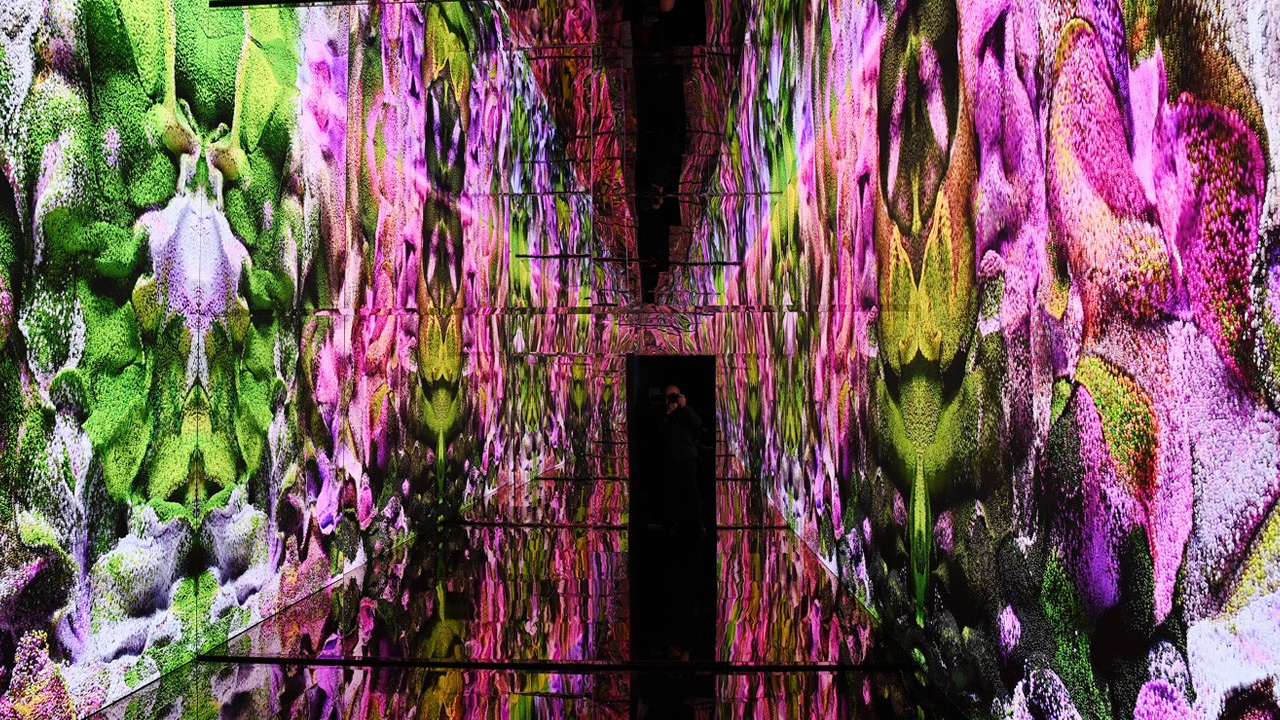How fitting that Bulgari, since the 1940s, has adopted the snake as its signature motif. Like the reptile that’s given to regular skin-shedding, the Italian luxury house has pursued constant reinvention (see: the ever-evolving design of its Serpenti jewelry) and in the past decade, increasingly embraced creative technologies to elevate its brand and consumer experience.
Case in point: last week, in collaboration with Turkish artist Refik Anadol, Bulgari launched Serpenti Metamorphosis, a public installation at the Piazza Duomo in Milan that runs until October 31. Intended to coincide with the brand’s newest Serpenti Collection, the exhibition centers on the transformation of the brand’s reptilian icon and deploys artificial intelligence (AI) to deepen visitors’ immersion.
How it works

Artist Refik Anadol fed millions of nature images into a machine learning algorithm to generate a constantly shifting landscape of organic forms. Image: Bulgari
Anchoring the multi-sensory experience are floor-to-ceiling screens presenting an AI-generated digital work. Created by Anadol, the piece was built from a database of some 70 million images of nature and flora, and features vibrantly hued organic forms in constant, fluid motion. Accompanying the visual display is the scent of Rainforest Serpenti, a fragrance developed in collaboration with perfume company Firmenich and diffused in real-time with an assist from AI.
After its run in Milan, the Serpenti Metamorphosis installation is set to tour various other cities before its titular digital work is minted as a NFT, polishing off a phygital outing. The token will be sold at auction, with proceeds from the sale marked for donation to a charity picked by Anadol and Bulgari.
Why it matters

Following its installation in Milan, the “Serpenti Metamorphosis” digital work will tour other cities before being minted as a NFT. Images: Bulgari on Instagram
Though billed as the first AI-driven digital work presented by a luxury brand, “Serpenti Metamorphosis” is hardly Bulgari’s first team-up with artists working in creative technology — notably, in 2014, the house marked its 130th anniversary with Vedute Di Roma, a short film by Keiichi Matsuda that featured 3D scanning technology. This round, the brand’s dip into AI bespeaks its continued grasp of how emerging tech can add new and rich dimensions to the luxury experience.
And just in time too: over the past few months, the profile of NFTs has exploded within the luxury sector. In addition to digital fashion offerings from Drest and RTFKT, media outlet L’Officiel has launched an exhibition in the metaverse, while brands including Dolce & Gabbana and Balmain have released so-called NFT collections to enthusiastic buyers. Bulgari’s entry further underscores the creative and commercial possibilities the metaverse holds for luxury players, potentially expanding on their physical presence and engaging a young, digitally savvy class of consumer.
What they said
“The concept of ‘metamorphosis’ is truly inspiring for me as machine intelligence has the capacity to take the colors, patterns, and shapes of nature and reproduce them into new forms that only exist in its mind… This precision is demonstrated in everything that Bulgari does, so I see so many similarities in the precise way that we create our artworks and the craftsmanship that goes into the creation of Bulgari jewels.” — Refik Anadol, artist
“This project is therefore the perfect example of how Bulgari is able to achieve a real metamorphosis of the luxury experience becoming more emotionally immersive than ever through the use of new technologies.” — Jean-Christophe Babin, CEO, Bulgari



